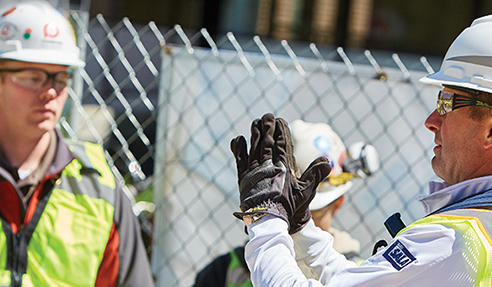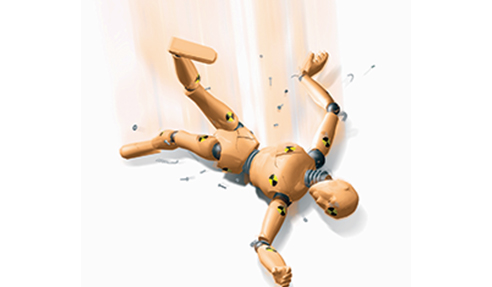The ABC's of Fall Protection and Height Safety with 3M Demystifying fall protection... learning your ABC's! Countless hours have been spent in convincing employers to provide safety footwear to prevent the risk of toes being lost, on ear muffs to prevent hearing damage and gloves to prevent cut fingers. Having said that, the Safety industry has always emphasised the importance of using fall protection equipment to protect workers operating at height. However, they have also shrouded the principles of height safety in mystery, and this has not helped the industry grasp a basic understanding of the principles involved in equipment that saves lives. In 2017, a total of 32 Australian and New Zealand workers died as a result of a fall from a height, with countless others, seriously injured. The effects of a fall on a work site are far-reaching and go beyond the company to the family members and even the community. Most of these injuries and deaths are totally needless because they could be avoided with the right fall protection gear, used the right way. 
The principles of height safety While fall protection is a complicated issue and details of your local laws and regulations, codes of practice and standards all need to be considered and understood, there are basic rules and principles that need to be followed to increase the safety of people working at height.
There are two common systems of fall protection. The first is called Restraint, where the fall protection system prevents the employee from reaching the position where a fall may be possible. The second is Fall Arrest, where the fall protection system must assume that a fall is possible. Even when using a Restraint system, all equipment must be Fall Arrest rated. The ABC's of fall protection Choosing the right equipment to use when working at height can be a difficult job, however, there are six key components that should be considered to protect yourself, and those around you, when working at height: Anchorages; Body Support; Connectors; Descent/Rescue, Education and Fall Protection for Tools. The A, B, C, D, E & F of fall protection cover the fundamental requirements of every personal fall protection system and serves to remind you of the key elements required when working at height. 
A - Anchorages Anchorage provides a secure point of attachment (to an existing structure) for the fall arrest system. Anchorage devices can be permanent or temporary and vary to suit the type of structure available. This can be a fixed point or a static line system, but it must be capable of sustaining a force of 15 kN for a single person application and 22 kN for a two-person application. B - Body Full body harnesses to connect the worker to the fall arrest system. They are specially designed to protect the worker against serious injury in the event of a fall, whilst also remaining comfortable to wear. Use only a standard approved full body harness that is within service, inspected prior to use and correctly fitted and adjusted. View our article: The Full Body Harness - why putting it on is not enough! C - Connectors Connectors are devices that connect the full body harness to the anchorage system. They can be single products or multiple devices working together. This can be a shock absorbing lanyard with a maximum working slack of 2 metres or a self-retracting lifeline (SRL). 
D - Descent/Rescue Descent and rescue systems enable the retrieval of an injured or incapacitated worker. In the event of a rescue, this equipment facilitates the rapid recovery of the worker without endangering other workers in the process. E - Education Education is essential to ensure at height workers are thoroughly trained to carry out tasks in a safe and efficient manner. F - Fall protection for tools Fall protection for tools helps make work environments safer and more productive by reducing dropped object incidents. View our article: What you need to know about fall protection for tools. Finally, and most importantly, never use fall protection equipment without first receiving competency-based training in working at heights and with fall protection equipment. There are many other aspects of fall prevention that must be considered prior to working at height, as incorrect use may lead to severe injury or even death in the most severe circumstances. Our fall protection products deliver the highest standards of protection for workers in the deepest of mines through to the top of the tallest towers. However, on any given shift, workers may potentially put themselves in harm's way - the importance of selecting the correct equipment, its regular inspection and maintenance and user training are all critical issues requiring further understanding and possibly specialist advice. This article is a general guide, reach out to a 3M Fall Protection Specialist if you're unsure of any aspect of fall protection or fall protection equipment. View the range of height safety solutions on www.3m.com.au today.
|
136 136 North Ryde, NSW, 2113
|



